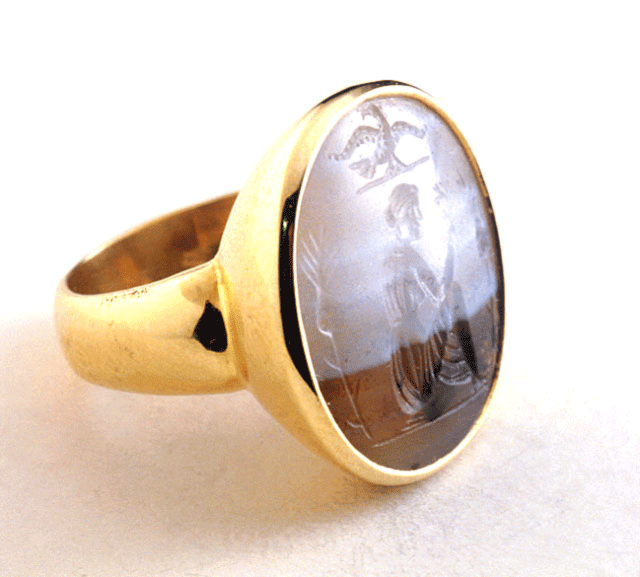Agate Intaglio Depicting a Standing Deity, 1st Century CE - 3rd Century CE
Agate/Gold
FJ.5983
The art of glyptics, or carving on colored precious stones, is probably one of the oldest known to humanity. Intaglios, gems with an incised design, were made as early as...
The art of glyptics, or carving on colored precious stones, is probably one of the oldest known to humanity. Intaglios, gems with an incised design, were made as early as the fourth and third millennia B.C. in Mesopotamia and the Aegean Islands. They display a virtuosity of execution that suggests an old and stable tradition rooted in the earliest centuries. The tools required for carving gems were simple: a wheel with a belt-drive and a set of drills. Abrasives were necessary since the materials used were too hard for a metal edge. A special difficulty of engraving intaglios, aside from their miniature size, was that the master had to work with a mirror image in mind. Of the various themes used on intaglios, images of women--clothed or naked, mortal or immortal, appear to have been a favorite in ancient times and in the Classical Revival. This lovely and intriguing intaglio shows a young woman seated in a setting that appears to be outdoors. She holds a branch, perhaps a laurel, with her right hand, while an eagle hovers above her. The tall plants on either side serve to frame the scene and to give the impression she is in the countryside. The natural coloration of the agate blends perfectly with the context as if a cloud is descending upon the woman, or an early morning mist is rising from a pond. There is a sense something mysterious is going on, as if a deity in the form of an eagle is about to make its descent. Only the sophisticated person, who wears this beautiful ring, will learn its secrets.



